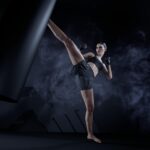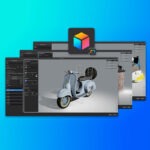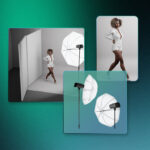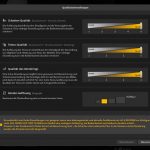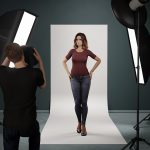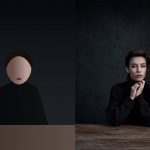I’m a French photographer based in Nantes, I started “playing” with my first studio strobes in 2005. Since nothing replaces practice, I remember knocking on my neighbours’ doors to find “models” to experiment with my setups (my kids had only so much patience)… It is only in 2021 that I discovered set.a.light 3D, it has been quite a game changer ... Read More »
Tutorials
The 3D Importer Add-On in the Spotlight
Import and add 3D objects of your choice to your set.a.light 3D projects and expand your set design possibilities to infinity. Import for example furniture, decorative elements or even entire houses. This way you can make your setups even more realistic and perfectly match your needs. It finally arrived – 3D Importer can be used in our Community! From now ... Read More »
Exploring the Brenizer panorama technique
using a virtual studio setting
set.a.light 3D is a powerful environment to experiment with various lighting setups and to prepare for actual shoots. In addition, it is a great tool to demonstrate and teach lighting techniques. The software’s capabilities however are not limited to the field of lighting: its flexible features and high-quality image rendering make it suitable for broader photographic exploration. In the following ... Read More »
Underrated Umbrellas: Simple Lighting Setups
Umbrella PortraitsLighting Blueprints + Concept Inspiration Yes, they spill light all over the place. And an umbrella’s beam is hard to control, and modifying the light’s (or shadow’s) characteristic is impossible. Especially the basic, generic white shoot-through fellow presents himself as a dull tool.But, besides being a criminally cheap modifier – the small generic umbrella, that is – it’s also ... Read More »
15 Essential Shortcuts for set.a.light 3D
Shortcuts are essential for effective work. Moving the mouse to the desired object, to click on it and then enter the menu takes a lot of time and is simply no fun. In this video you will get to know 15 essential shortcuts for set.a.light 3D, that will help you to speed up your workflow. 15 Essential Shortcuts for set.a.light ... Read More »
Scenes with a special story
Did you know that set.a.light 3D is used by creatives for a wide variety of purposes? Apart from planning a shooting, the 3D studio can also be used to create crazy scenes that would not necessarily be possible in reality. This invites you to let your imagination run wild and to turn the world upside down. So today we present ... Read More »
Everything you need to know about the quality settings in set.a.light 3D
Maybe you have already worked with them, maybe you are not yet familiar with them: The quality options in set.a.light 3D. The quality options help you to adjust the performance of set.a.light 3D to your current work step at any time and allow you to make changes to the quality of your rendering. This ensures an efficient workflow and makes ... Read More »
The Power Of Using Grids With Gels – Video Tutorial with Lindsay Adler
“Grids are really important, especially when you`re working in small spaces. If the light is going where you don`t intend it to and if the light is bouncing on surfaces you don`t intend it to, a grid can help you out.” Lindsay Adler. Based in New York City, fashion photographer Lindsay Adler has risen to the top of her industry, ... Read More »
High Power Posing vs. Low Power Posing – the body language has a huge influence on the effect of your pictures
The body language of your model has an enormous influence on the visual impact of your photos. We tell you how you can support the expressiveness of your pictures by planned posing and show you with examples what is behind the terms “High Power” & “Low Power” Poses. As a photographer, you don’t always get a model in front of ... Read More »
From concept to light – Julien Apruzzese talks about his methodology of creating an image
“ Light is everything. Painters start on white canvas. We start on black canvas and so paint lights. And with excellent light, the difference between cameras becomes minimal.” Julien Apruzzese is passionate about art and science. Working as a photographer and retoucher, he sees himself as an image creator. Like a painter, the realistic rendering hardly pleases him, he prefers ... Read More »
 elixxier – Photo Blog Light settings and lighting structures for studio and outdoor photography. Tips and tricks for set.a.light 3D – The photo studio and light simulation for photographers.
elixxier – Photo Blog Light settings and lighting structures for studio and outdoor photography. Tips and tricks for set.a.light 3D – The photo studio and light simulation for photographers.
